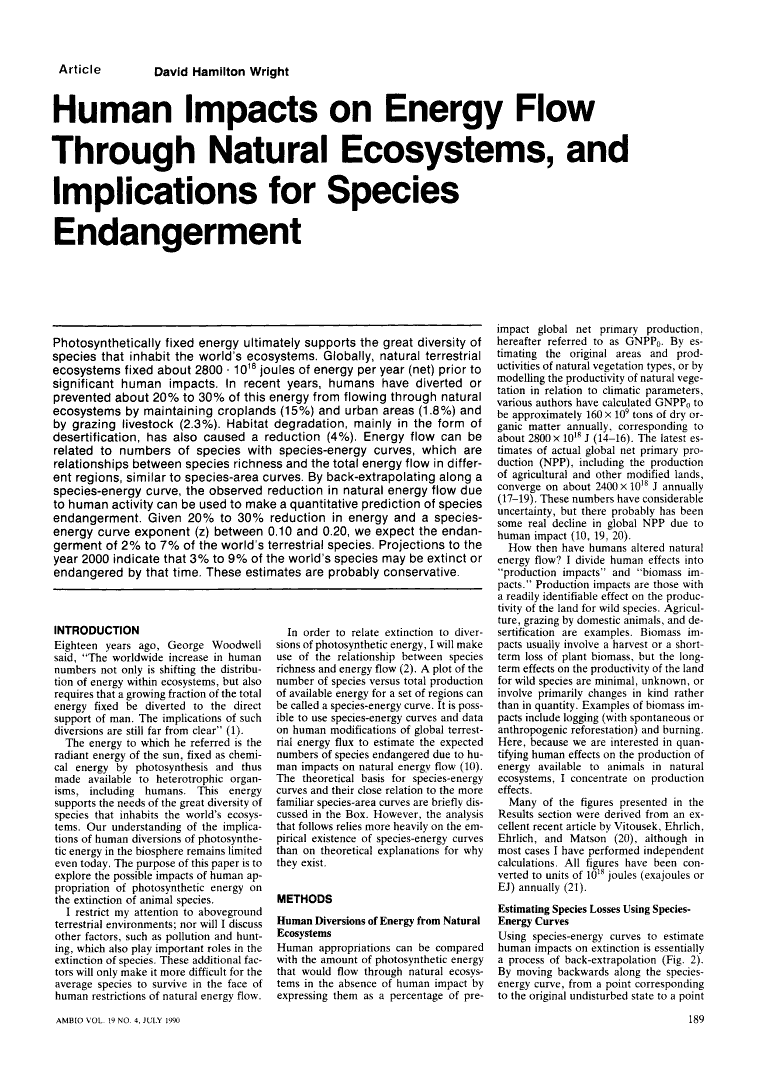
Photosynthetically fixed energy ultimately supports the great diversity of species that inhabit the world's ecosystems. Globally, natural terrestrial ecosystems fixed about $2800\cdot 10^{18}$ joules of energy per year (net) prior to significant human impacts. In recent years, humans have diverted or prevented about 20% to 30% of this energy from flowing through natural ecosystems by maintaining croplands (15%) and urban areas (1.8%) and by grazing livestock (2.3%). Habitat degradation, mainly in the form of desertification, has also caused a reduction (4%). Energy flow can be related to numbers of species with species-energy curves, which are relationships between species richness and the total energy flow in different regions, similar to species-area curves. By back-extrapolating along a species-energy curve, the observed reduction in natural energy flow due to human activity can be used to make a quantitative prediction of species endangerment. Given 20% to 30% reduction in energy and a species-energy curve exponent (z) between 0.10 and 0.20, we expect the endangerment of 2% to 7% of the world's terrestrial species. Projections to the year 2000 indicate that 3% to 9% of the world's species may be extinct or endangered by that time. These estimates are probably conservative.